You must be logged in to rate content!
7 minute(s) of a 484 minute read
12-28-2013
Hello Al
A good question. but first you have to look at the two cars you are comparing. The SS100 had either a 2.5 litre or 3.5 litre engine while the Rapier has a 1.1 litre. Having said that, on the road, obviously a 3.5 Litre SS will be faster in maximum speed but that is all. In acceleration over a quarter mile there would be very little difference while in road holding and braking the Rapier is well in front. A SS100 could not live with a Rapier on a twisting mountain road. While I have never owned a SS100 I did build and own a 3.5 litre SS-Jaguar special which was shorter and lighter than a SS100. It handled much better than a SS100 mainly because the engine was about six inches further back in the chassis giving better weight distribution. In terms of survival it is almost impossible to know how many "genuine" SS100 survive because there have been so many fake "replica" cars made. The Rapier Register keeps extremely accurate records of the Rapiers and can tell you where every car built is or what happened to it. The attached is a random selection of one page of the Register giving the cars in registration number order, the date they were first registered, where they were first registered, who they were sold by, the engine & chassis numbers which coach-builder built the body and the body style and the "Remarks" tell where the car is today or what happened to it.
Even today many Vintage and Classic Sports Car enthusiasts will tell you that the SS100 is something of a "Promenade Percy's" car, essentially a "Show Pony". Only in recent years has the SS100 has become eligible for membership of the VSCC in England.
Bj
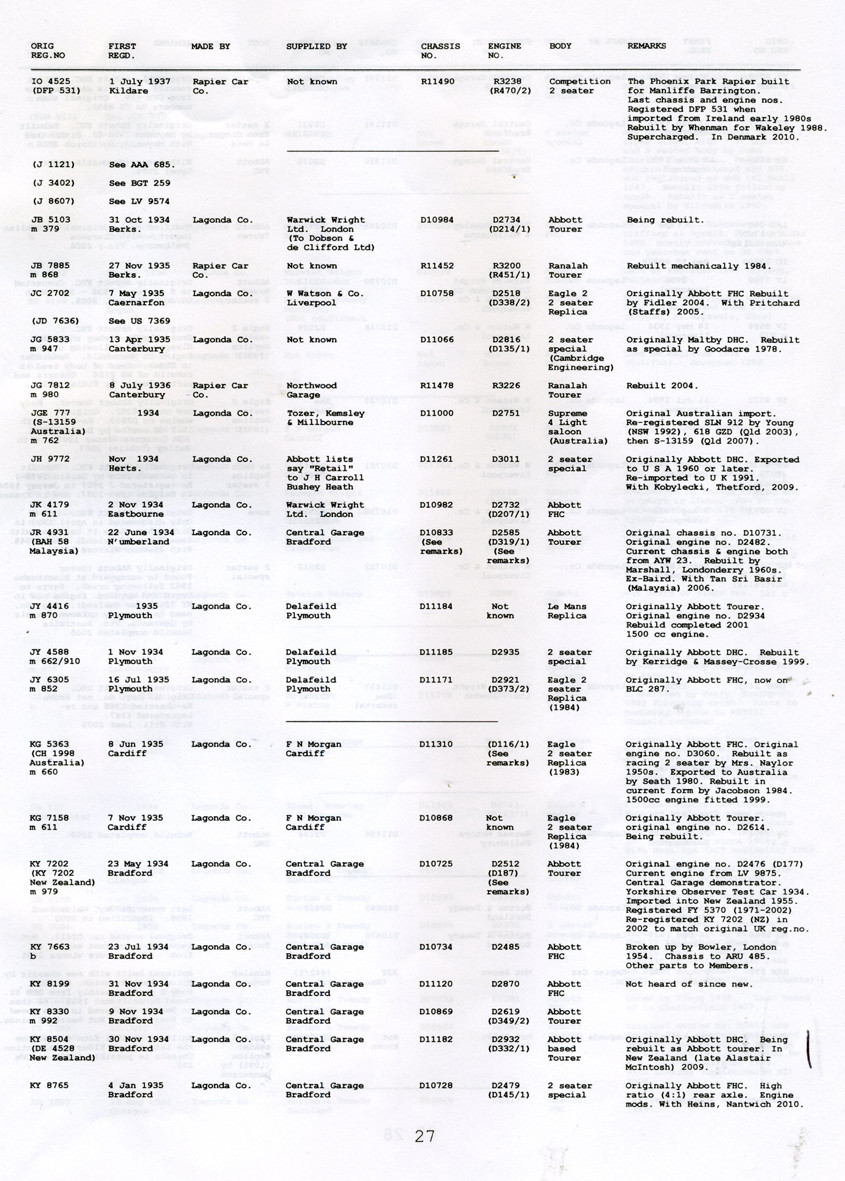
If you look at the entry for KG 5363 you can read a condensed history of my car.
You need to "click" on the chart twice to bring it up to readable size.
Hello Michael
To the best of my knowledge the Letters give an indication of where (the County) the car was first registered the Numbers simply give an indication of the date registered in numerical order. The number is issued to the first owner or perhaps more accurately the Dealer selling the car when new. Probably an English reader can give a better explanation.
Bj.
3-22-2014
The ship having been delayed by 7 days, we hope to load the five Rapiers (and one Riley) into the container for their sea voyage to the UK next Thursday or Friday.
3-23-2014
With the car virtually ready to go into the container there were just one or two little jobs left to do.
The main one was to check that the carbutettors were nicely "in tune". This can be litterally taken in the musical sense of the word as will soon be revealed.
The very first thing with a pair of twin or dual SU carbs is to make sure that they are synchronised. To do this it is necessary to release the throttle shaft coupling (See Below) so that each throttle can be moved independently. With the motor running and nicely warmed up and the air filters removed, Listen to each of the intakes in turn through a short length of rubber tube or hose. You will hear a hissing noise, by listening each in turn adjust the idle screw (Moving in very small adjustment each time) on each until the hiss sounds for both carbs is the same in loudness and tone. You can then re-tigthen the coupling making sure that you did not disturb the setting in the process. The carbs should now be synchronised. Next thing is the check the mixture. Most modern (1950s & 60s SUs have a little piston lifting needle under the right hand side of the dashpot (see photograph below). Again with the motor warmed up and running at an idle lift one piston, if the engine speeds up the mixture is too rich, if it slows or stops it is too lean, if the motor continues to run at an even idle the mixture is correct. If your carbs do not have these lifters you must lift the piston very slightly with a flat blade screw driver or similar, This should be approx 1/32 in) Proceed to check the other carb, if the mixture is either too rich ot lean this can be adjusted by screwing the jet adjusting nut (see diagram) ONE FLAT AT A TIME Screwing "Up" to weaken and "Down" to richen, rechecking the mixture with each adjustment.
Many people are un-aware that, with SU carbs in particular, the level of the float in the float bowl can effect the mixture strength. This is checked bu carefully removing the float bowl lid making sure that you do not drop the metering needle. The float level is measured by the clearance between the lever that rests of the top of the float and bears onto the bottom of the needle regulating the supply of fuel into the carb. To check this use a short piece of metal rod placed between the "prongs" and the lid of the float bowl. (The shank of a twist-drill is ideal.)
This varies depending on the year and size of the carburettor and the diameter of the float bowl. Sealing of the needle on its seat can be checked by gently blowing through the inlet on the side of the float bowl lid. (See attached chart below).

Most (post WW2) SU's Have dampers incorporated with their dashpot screw-in oil caps. (See below) These should be topped up once per month, (depending on the amount of driving done) Note NOT filled to the top of the dashpot but filled to the top of the chamber in the piston guide.
Finally once per year it is a good idea to remove the Bandjo fitting bringing the fuel into the float bowl, there should be a small conical filter that requires cleaning before replacing back into its place in the junction.
Bj
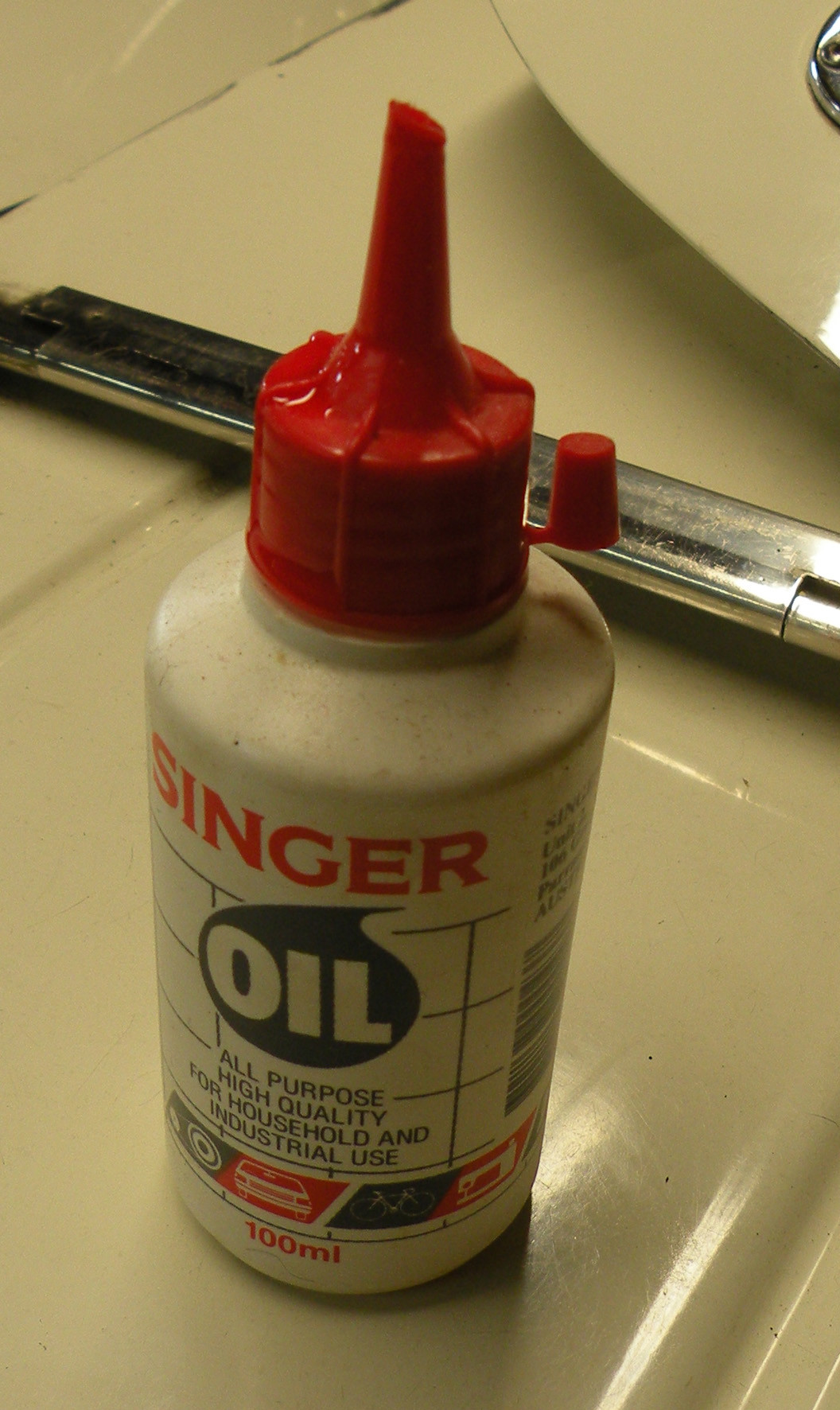
There is often discussion about the correct oil to put in dashpot dampers. Most instruction books simply say "light oil" An ideal oil is as far away as your supermarket home hardware shelves, usually marketed as "3 in 1" or Sewing machine oil. Engine oils are generally too thick and too viscous. Singer Sewing machine oil is usually readily available, a 100 ml container, as shown, should last some considerable time.
Bj.
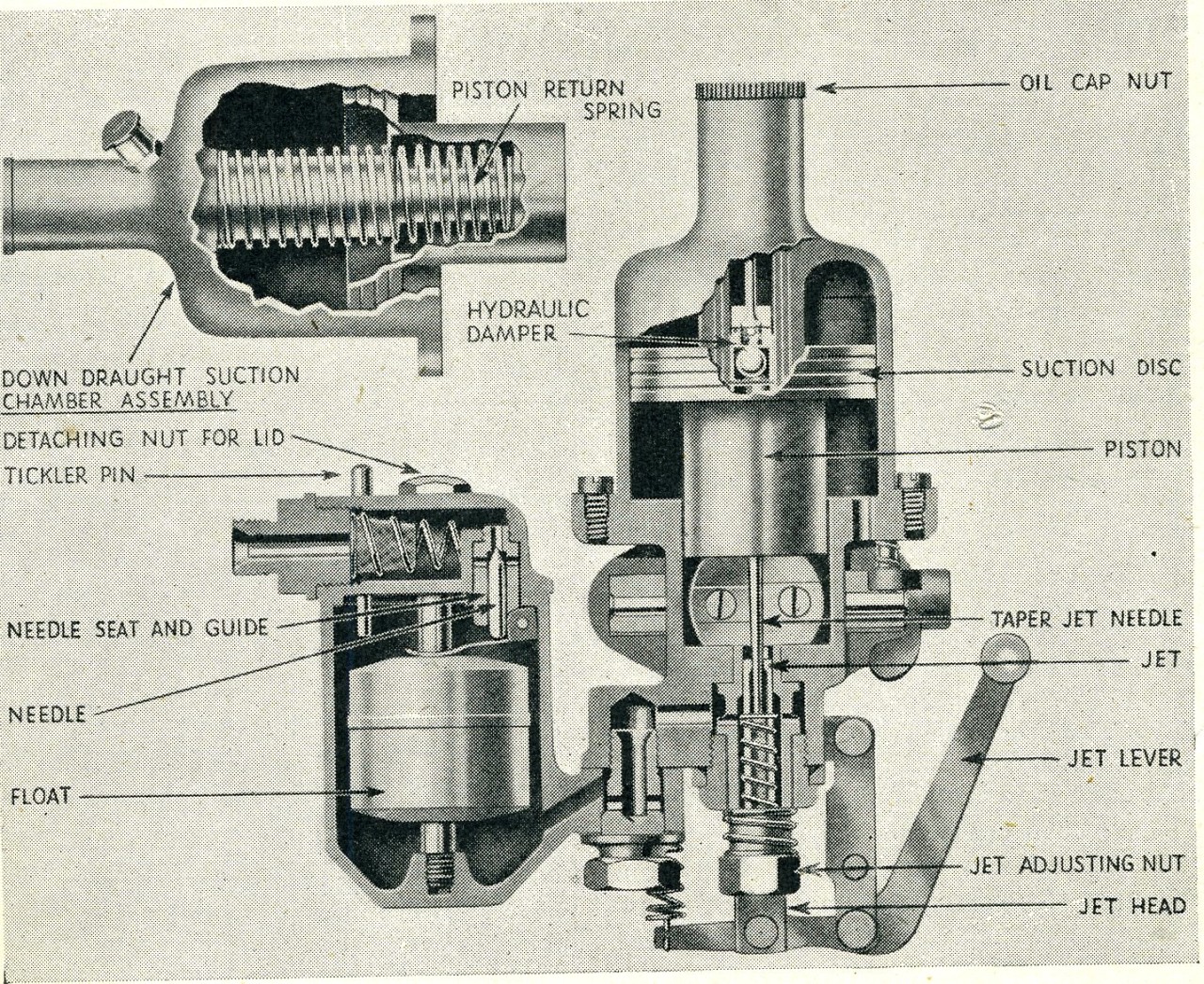
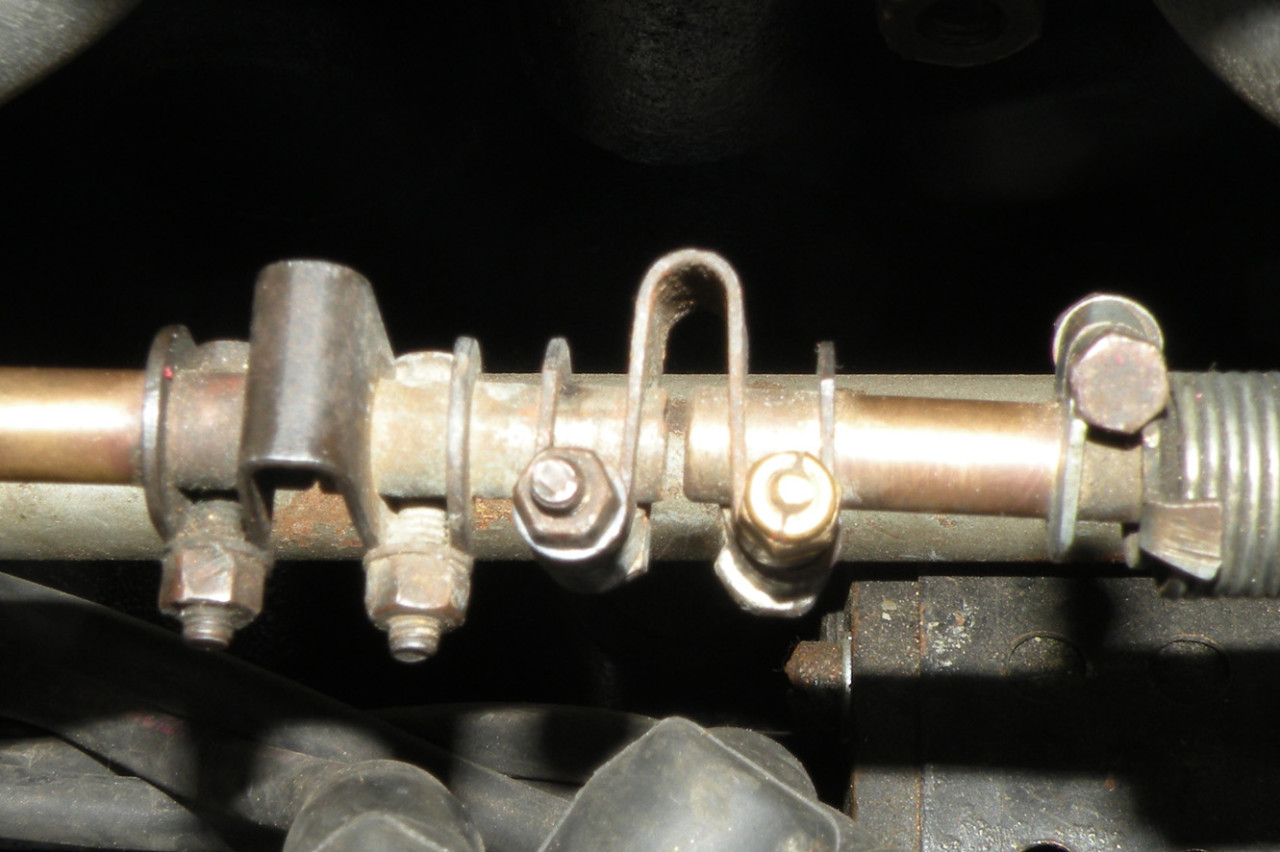
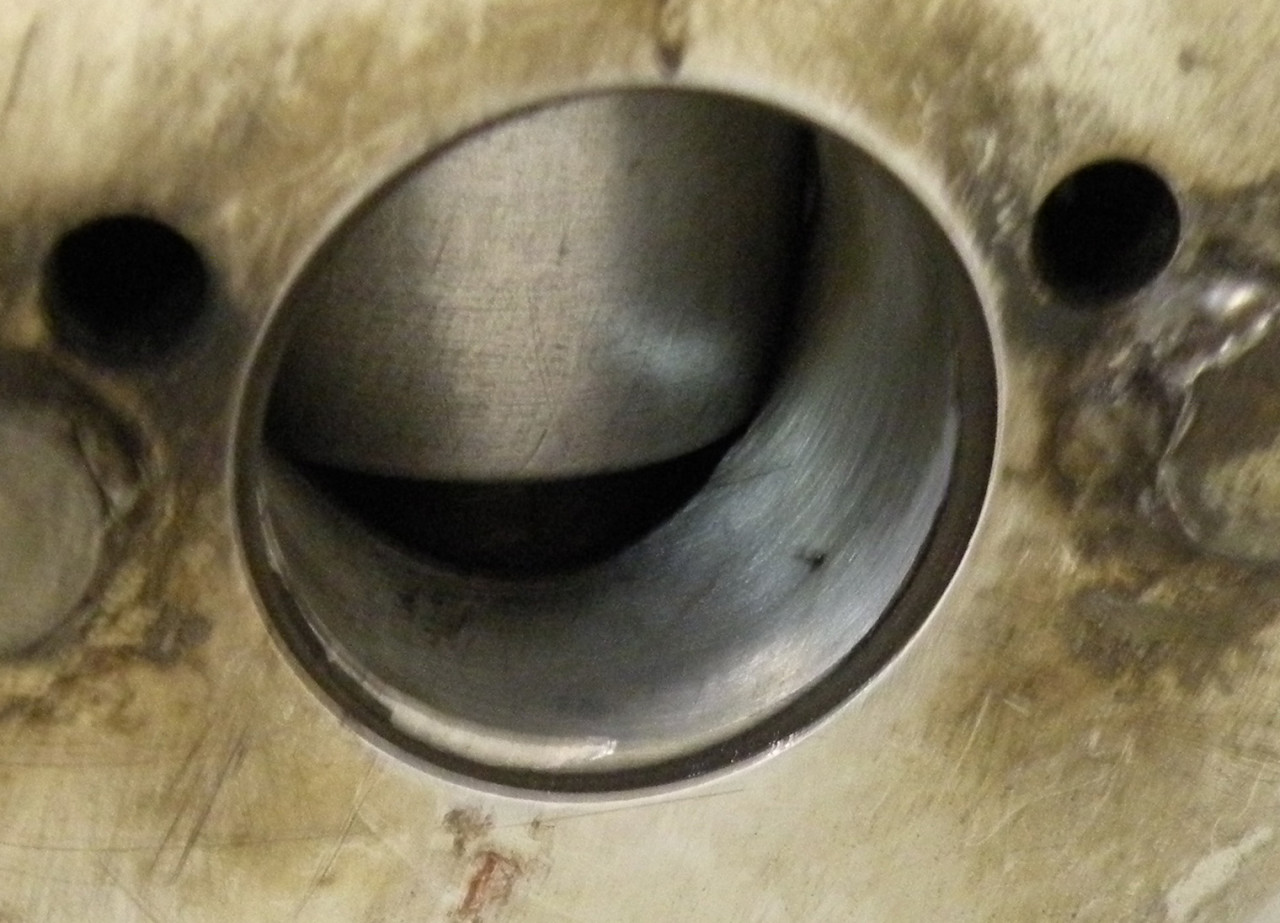
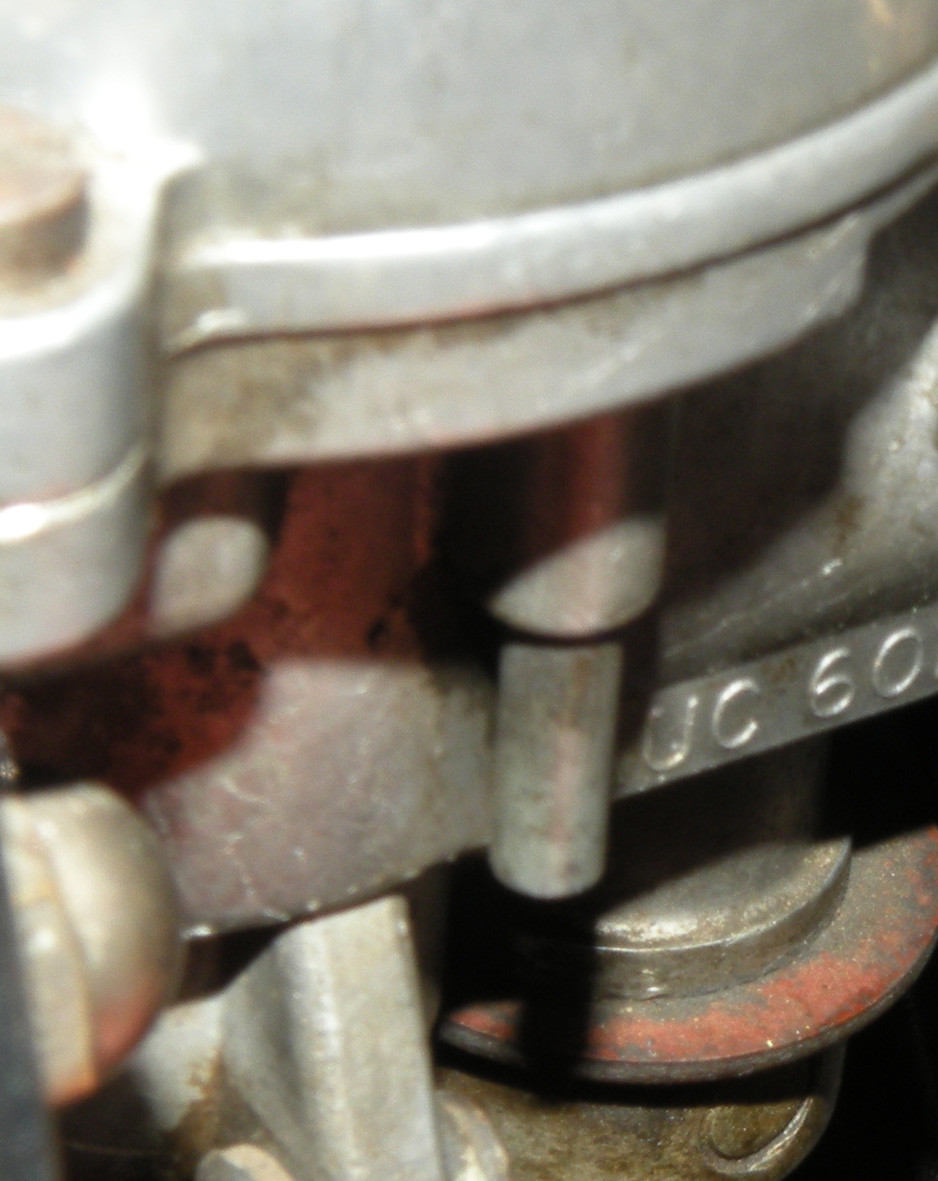
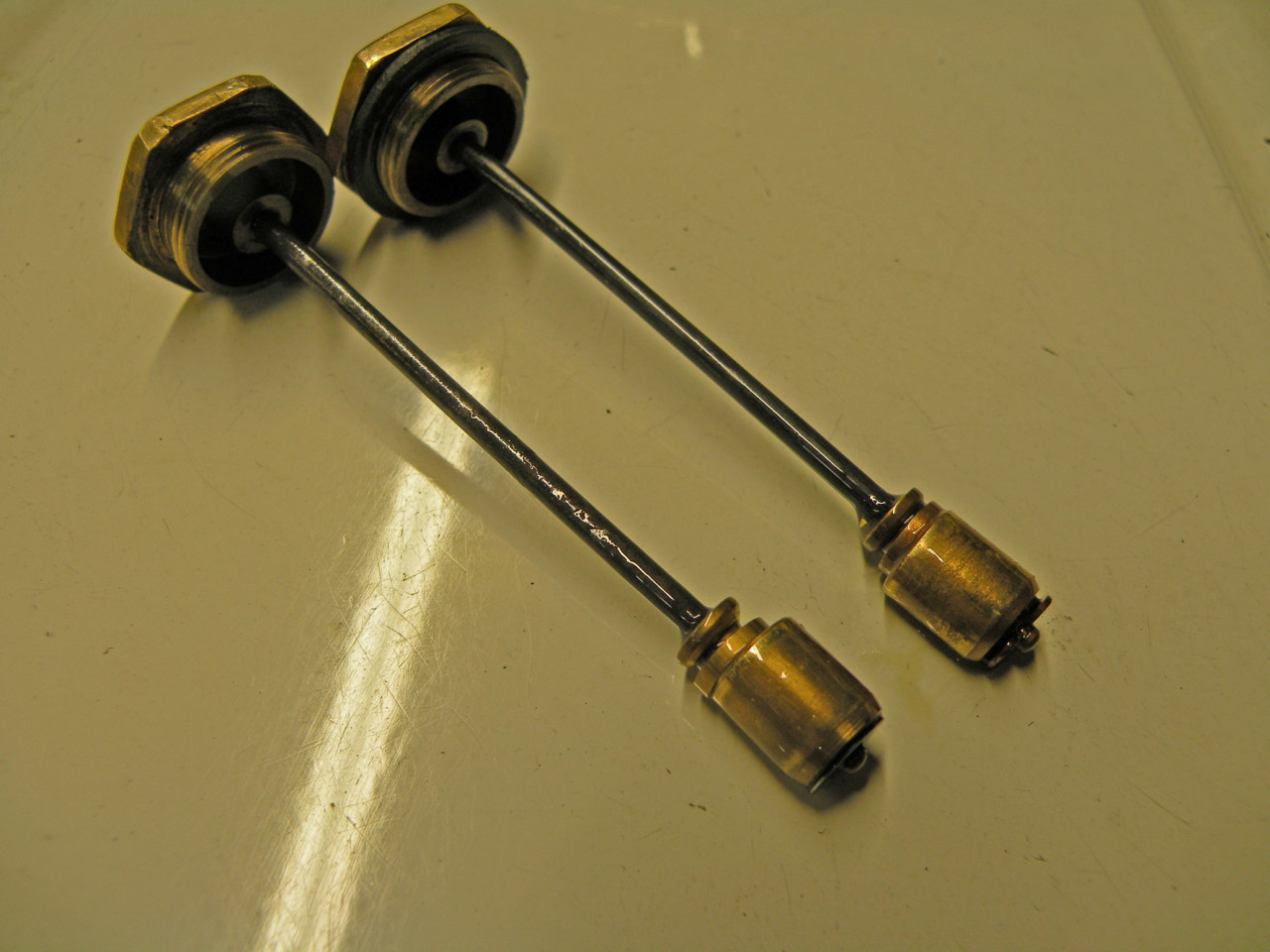
Great detail!
Posted by Diggymart on 6/20/19 @ 2:41:04 PM